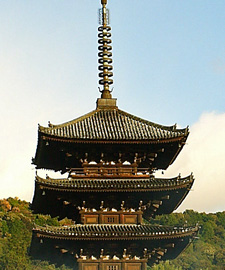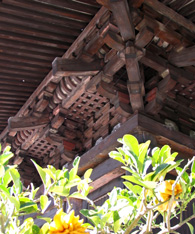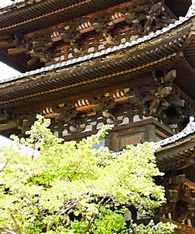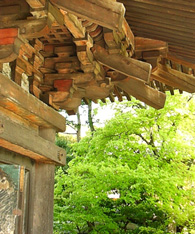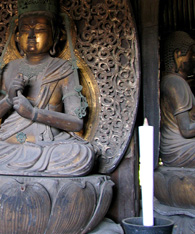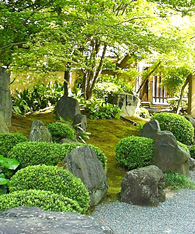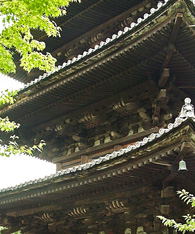Situated in the eastern quarter of Kyoto, between Yasaka Shrine and Kiyomizu Temple, is Hokanji Temple - also known as Yasaka Pagoda. It is to Kyoto what the Eiffel Tower is to Paris - an icon for a city steeped in history and culture.
According to historical records, the pagoda was constructed by Prince Shotoku Taishi (exact date unknown) in dedication to Buddha. In 948 AD, it was realigned in a massive reconstruction project after starting to lean precariously to one side. Unfortunately, it could not escape calamity for very long.
Hokanji Temple

Kyoto's Historical Icon

In 1179, the entire temple complex was burned down during a squabble between the rival forces of Kiyomizu Temple and Yasaka Shrine. It was re-erected in 1191 under order of Shogun Minamoto Yorimoto but destroyed by fire in 1291, and again in 1436.
The present structure was re-erected in 1440 by Shogun Yoshinori Ashikaga and has remained standing ever since.

Unlike the grandeur of the original temple grounds centuries earlier, Hokanji Temple sits on a modest plot of land lined by Kyoto's famous machi-nami (row houses) and souvenir shops.
Standing at 46 meters high (151 feet), the pagoda is registered as an important cultural property. It is built around a massive wooden shaft made from a single zelkova tree which runs the entire height of the structure. Serving as a pendulum, the shaft swings and sways during the day and has helped the tower maintain its balance during the many earthquakes which regularly rock Japan.

Another interesting design feature on the temple is the complex system of interlocking joints which support the weight of the five, heavily-tiled stages and extend over the entrance.
Visitors who venture inside are greeted by four intricately carved wooden statues of Buddha positioned around the protective central shaft, each solemnly facing the four corners of the earth.

Those brave visitors who choose to climb up a series of steep stairs to the top of the pagoda get a glimpse of 21st century Kyoto through small windows. Although the view outside is limited, the discoveries within the temple are worth the slightly perilous climb. Once your eyes have finally adjusted to the darkness, you'll find fading images from an age long past elaborately painted on every wall.

The well attended garden surrounding the base of the temple offers a nicely shaded place in summer for visitors to enjoy viewing the pagoda while others venture inside.

Although other historical sites like Kinkaku-ji (The Gold Pavilion) attract more visitors, Hokanji Temple is only a 5-minute walk (west) off of Ninen-zaka - the famous shopping street leading up to majestic Kiyomizu Temple.
Well worth the extra time to see one of the most historical icons of this magnificent city.

